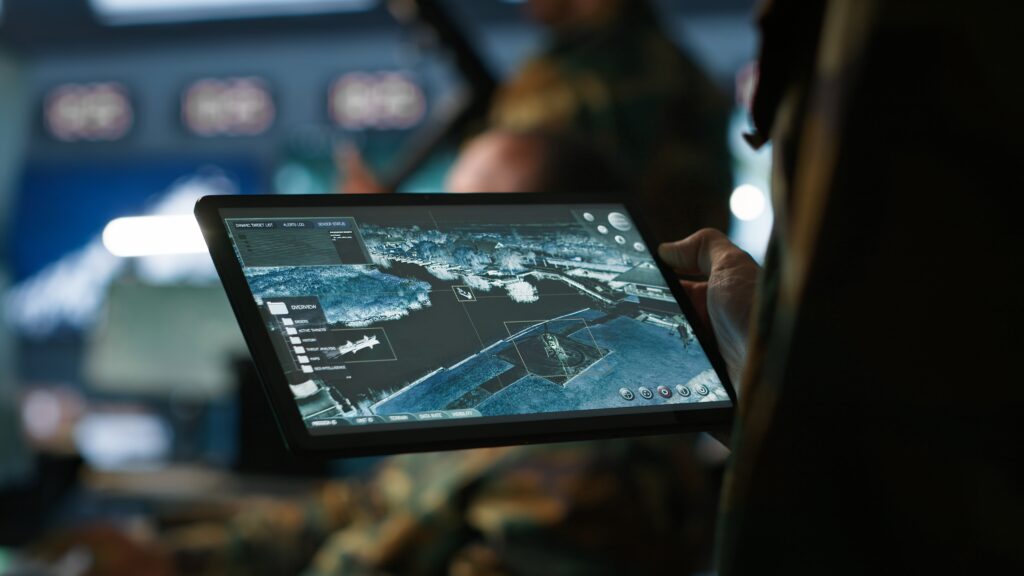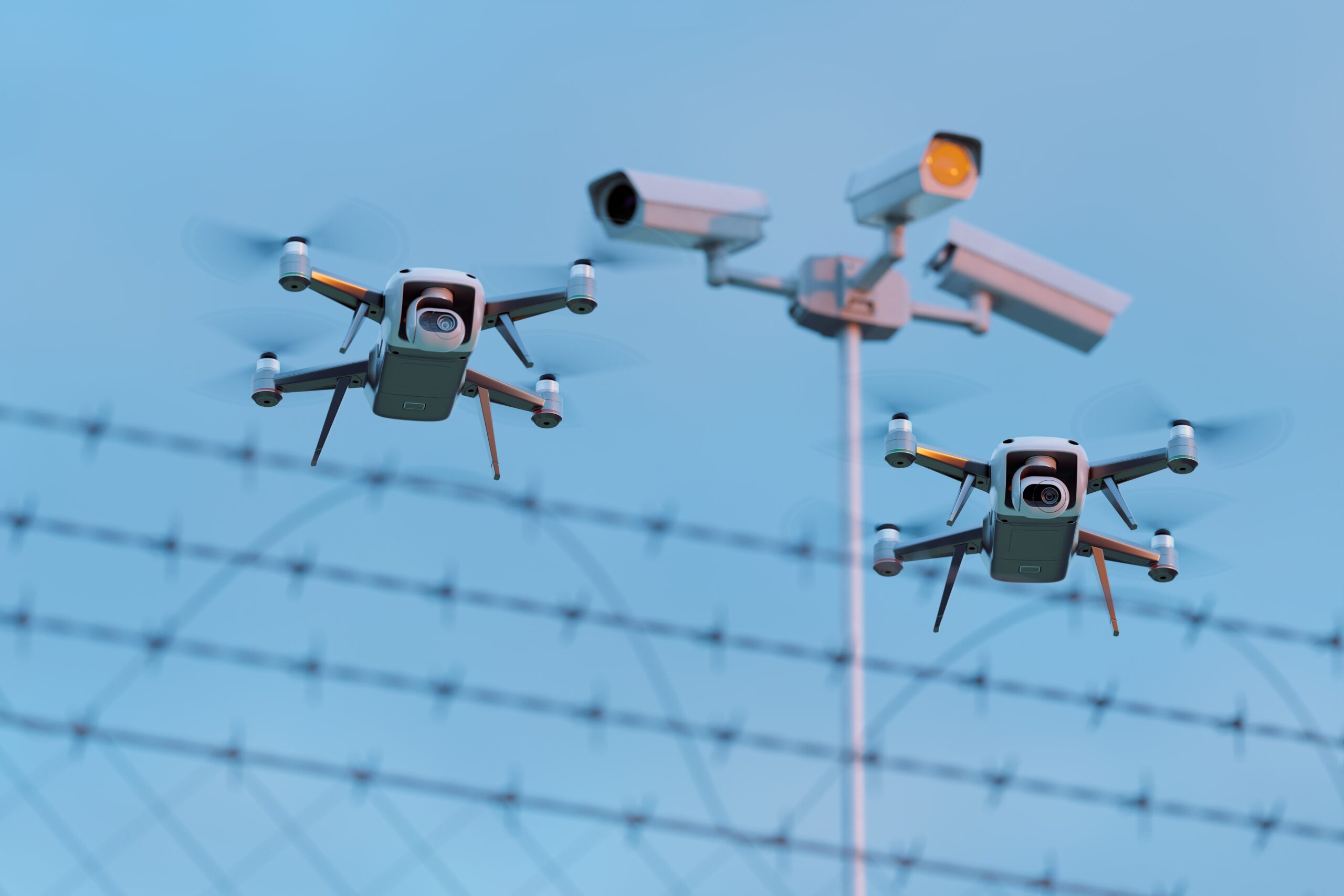For years, the limited law on counter-unmanned aircraft systems (C-UAS) in the United States has left state, local, tribal, and territorial (SLTT) authorities on the sidelines as drones—both beneficial and malicious—proliferate. Until now, only a handful of federal agencies have been empowered to detect, track, identify, and mitigate rogue drones within U.S. airspace.
President Trump’s June 2025 Executive Order, “Restoring American Airspace Sovereignty,” (“the EO”) marks what some might perceive as a seismic shift in U.S. counter-drone policy. The order aims to reclaim control over national airspace by seemingly empowering a broader array of actors—especially at the SLTT level—to detect, track, and, under certain conditions, mitigate drone threats.
Yet, as the drone threat evolves, so too does the legal debate over how to address it. Some voices have recently challenged the constitutionality of the existing federal C-UAS laws, citing concerns over the Fourth Amendment, due process and federalism.
Will the EO add fuel to the fire? It need not. The success of any expanded C-UAS approach hinges not just on technology or legal authority, but on the integrity, transparency, and accountability of those entrusted with these tools. If SLTT agencies adopt best practices—such as robust protocols, thorough legal reviews, transparency, and civil liberties protections—they can safeguard both the citizens in their care from threats in the skies, as well as protect the Constitution.
The Escalating Drone Threat to the U.S. Homeland
Drones have transformed society in a myriad of positive ways, but we cannot ignore their darker uses. The rapid democratization of drone technology means that bad actors can now deploy sophisticated aerial platforms for surveillance, smuggling, or even kinetic attacks, all at a fraction of the cost and risk of traditional methods. The threat matrix continues to expand, with adversaries and criminals exploiting the accessibility and anonymity of small UAS to challenge law enforcement and national security.
Weaponized drones, airborne contraband deliveries, unauthorized surveillance, and disruptions to critical infrastructure are not hypothetical risks—they are daily realities of criminal activity at prisons, stadiums, and sensitive government sites. U.S. critical infrastructure—from energy grids to water facilities—faces persistent probing by drones, often with unclear attribution. The sheer speed and unpredictability of drone operations compound this challenge. A quadcopter can close on a stadium or power plant in seconds, leaving little time for deliberation.
Despite these risks, most SLTT agencies have remained legally powerless to act, forced to rely on federal partners who may not be present when seconds count. The call for expanded C-UAS authority at the local level has grown louder, driven by the reality that “first responders” are often the only line of defense against airborne threats.
Inside the “Restoring American Airspace Sovereignty” Executive Order
Signed on June 6, 2025, the new multi-faceted EO represents a sweeping federal initiative to reclaim control over U.S. skies and safeguard the homeland. With major global events like the World Cup and Olympics on the horizon, this EO signals a strong federal commitment to both advance drone technology and ensure the security of American airspace against evolving threats.

Establishment of a Federal Task Force
The EO creates a Federal Task Force to Restore American Airspace Sovereignty, chaired by the Assistant to the President for National Security Affairs. Tasked with reviewing operational, technical, and regulatory frameworks and recommending solutions to address UAS threats, the Task Force’s mandate includes developing proposed solutions and making recommendations on otherwise implementing the EO.
Airspace Regulations and FAA Rulemaking
The EO orders the FAA to expedite rulemaking under Section 2209(f) of the FAA Extension, Safety, and Security Act of 2016. This includes publishing a rule that establishes processes for restricting UAS flights over fixed-site facilities and critical infrastructure, as well as making Notices to Airmen (NOTAMs) and Temporary Flight Restrictions (TFRs) freely available online for drone geofencing and navigational purposes.
Enhancing Enforcement and Grant Programs
The Attorney General (AG), in coordination with the FAA, is directed to enforce civil and criminal laws against drone operators who endanger the public or violate airspace restrictions and to make recommendations to tighten up criminal penalties for the same. The EO also instructs the Department of Justice (DOJ) and the Department of Homeland Security (DHS) to ensure that their grant programs allow SLTT agencies to acquire C-UAS equipment or services for “detection, tracking, or identification of drones and drone signals,” consistent with their legal authorities.
Detection, Tracking, and Identification Provisions
All federal agencies are directed to use existing authorities to detect, track, and identify drones and drone signals, “consistent with the Fourth Amendment.” The EO also mandates updates to a 2020 federal advisory on the use of C-UAS technology. It also requires the FAA to provide automated, real-time access to personal identifying information (PII) associated with UAS Remote Identification (Remote ID) signals to appropriate agencies and SLTTs, with privacy safeguards.
Guidance for Private Critical Infrastructure
Within 60 days, DHS and the FAA must publish guidance to help private critical infrastructure owners employ drone detection and identification technologies.
Enhancing General Protections
The EO directs top federal officials to assess whether key sites—like U.S. borders, large airports, federal facilities, critical infrastructure and military installations—should be designated for enhanced drone protections under Section 124(n) of the Homeland Security Act (6 U.S.C. § 124n), which grants both DHS and the DOJ its C-UAS authority, and to recommend any necessary legal changes to the President within 90 days.
Building Counter-UAS Capacity and Training
The EO calls for integrating C-UAS operations into Joint Terrorism Task Forces (JTTFs) for mass gatherings. JTTFs exemplify the “all-hands-on-deck” approach to national security. These FBI-lead teams, which operate out of FBI field offices, leverage the strengths of both federal and SLTT law enforcement to disrupt terrorist plots, protect critical infrastructure and keep the public safe. Presumably the integration of C-UAS ops in JTTFs will enable SLTT working there to perform them alongside their federal counterparts. The EO also fast-tracks the creation of a National Training Center (NTC) for Counter-UAS, focusing initial efforts on securing major upcoming events like the FIFA World Cup 2026 and the 2028 Summer Olympics.
Caveats
The EO contains closing caveats including that it “shall be implemented consistent with applicable law and subject to the availability of appropriations.” This sentence is critical.
Will Constitutional Challenges Be Unleashed?
Historically, Congress has felt compelled to provide explicit authority to federal agencies, and even then, Section 124(n) has faced legal attacks on multiple constitutional grounds. Importantly, the EO’s language does not directly bestow SLTTs with the authority to utilize the wide range of available drone detection technologies.
Rather, it includes some vague language about utilizing the JTTF framework to protect mass gathering events. Even that doesn’t address the need for SLTTs to be able to utilize drone detection technologies outside of specific mass gathering events where an FBI Field Office’s JTTF may be involved. Perhaps, implied in the EO’s direction to the AG to revisit the 2020 memo, the read-between-the-lines result will be an updated memo opining that detecting, tracking and identifying UAS is legally permissible in general (including for critical infrastructure owners). Or perhaps there is legislation out there that will actually be passed to enable all of this.
Regardless, even with congressional endorsement of SLTT C-UAS action, some legal scholars have recently challenged the constitutionality of existing federal C-UAS authorities, focusing on:
- Fourth Amendment: Alleged unreasonable searches and seizures through passive RF monitoring and mitigation actions without a warrant.
- First Amendment: Concerns about chilling effects on newsgathering, protest documentation, and artistic expression.
- Fifth Amendment: Claims of property deprivation without due process when drones are seized or destroyed.
- Tenth Amendment: Arguments that federal C-UAS authority infringes on state sovereignty over low-altitude airspace.
As I discussed in a separate OpEd for Duke’s Center on Law, Ethics and National Security (Lawfire Blog), these challenges have largely been dismissed by courts and should otherwise fail. Under the Fourth Amendment, UAS in public airspace have no privacy expectation; passive RF monitoring is akin to observing a license plate consistent with the FAA’s Remote ID rule. C-UAS authorities are content-neutral, aimed at public safety, not speech suppression for purposes of the First Amendment. Where a drone is damaged or destroyed through mitigation techniques, Fifth Amendment due process can be satisfied by post-event remedies and the exigency exception. Finally, under the Tenth Amendment, federal authority over airspace is clear; SLTT empowerment aligns with federalism, not against it.
All of that said, SLTT agencies should prepare now by adopting robust protocols and safeguards to ensure that any expanded C-UAS powers are exercised constitutionally and responsibly.
Best Practices for SLTT: Avoiding Legal Pitfalls
As SLTT agencies prepare to wield new counter-UAS authorities, the stakes are high—not just for public safety, but for the constitutional rights of citizens and the legitimacy of law enforcement actions. Avoiding legal pitfalls requires more than technical readiness; it demands a proactive, principled approach that blends operational effectiveness with robust legal and ethical safeguards. Below, based on my 28 years of experience advising the military and law enforcement and personally contributing to relevant policies, regulations, and laws, I provide some best practices that can help SLTT agencies meet this challenge and ensure their C-UAS operations withstand both public and judicial scrutiny.
Develop Comprehensive Rules for Use of Force (RUF)
Clear, detailed rules for the use of force (RUF) must form the backbone of any responsible counter-UAS program. For example, consistent with federal guidance (much of which is not publicly available), SLTT agencies must precisely define what constitutes a “credible threat”—such as imminent physical harm, interference with critical infrastructure, or unauthorized surveillance—and identify the specific circumstances under which mitigation actions would be authorized. The RUF should also outline an escalation of force continuum to ensure that less intrusive measures (like warnings or signal disruption) will be attempted before resorting to destructive actions. Relevant legal counsel should review these RUF for legal compliance. This type of clarity will protect both the public and officers by minimizing the risk of overreach and providing a defensible framework if actions are later challenged in court.
Appropriate-Level Approvals
To ensure responsible and lawful use of C-UAS authorities, SLTT agencies should adopt an approval process for C-UAS actions modeled after the federal approach. Federal agencies such as DHS and DOJ operate under tightly circumscribed authorities, requiring rigorous oversight, comprehensive risk analysis, and close coordination with the FAA before any counter-drone actions are taken. These agencies do not act unilaterally or impulsively; instead, they must first establish that a “credible threat” exists to the safety or security of a covered facility or asset. Only after this threshold is met can mitigation measures—ranging from operator warnings to disabling or destroying drones—be considered, and even then, such actions demand high-level departmental approval and adherence to internal policies designed to safeguard privacy, civil rights, and civil liberties.
This federal model demonstrates that the implementation of C-UAS authorities is anything but freewheeling. Each action is governed by strict protocols and subject to ongoing oversight, ensuring that the extraordinary powers granted are exercised judiciously and only when truly necessary. For SLTT agencies, mirroring this high-approval standard would mean requiring senior leadership sign-off before deploying counter-drone mitigation measures, particularly those involving force or property deprivation. This approach not only aligns with constitutional principles and best practices but also builds public trust by demonstrating a commitment to transparency, accountability, and the careful stewardship of powerful new authorities.
Obtain Warrants When Possible
While exigent circumstances—such as an imminent threat to life or property—may justify immediate action without a warrant, whenever time and operational realities allow, SLTT agencies should seek judicial authorization before seizing or destroying a drone. This not only aligns with Fourth Amendment protections against unreasonable searches and seizures but also reinforces public trust by demonstrating respect for due process. Documenting the rationale for warrantless action, when it occurs, is equally important for accountability and transparency.
Conduct Legal “Tech Reviews”
Before deploying any counter-UAS technology, agencies should implement a rigorous “tech review” process, modeled after the military’s weapons review (focused on compliance with international humanitarian law) but grounded in constitutional and domestic statutory law. This review should evaluate the technical capabilities and limitations of each tool, assess potential impacts on privacy and civil liberties, and ensure compliance with all relevant statutes and regulations. By proactively identifying and mitigating legal risks, agencies can avoid costly litigation and public backlash while ensuring that their chosen technologies are both effective and lawful.
Transparency and Public Accountability
Transparency remains essential to building and maintaining public trust—especially when agencies are empowered to take extraordinary actions. SLTT agencies should adopt practices similar to the Chula Vista Police Department’s Drone as First Responder (DFR) program, which publicly posts details of drone deployments and outcomes. Regular public reporting on C-UAS activities, including the number of incidents, types of actions taken, and outcomes, can help demystify operations and provide assurance that authorities are being exercised responsibly and sparingly.

Civil Liberties Protections
Protecting civil liberties must be a central pillar of any C-UAS program. Agencies might consider modeling their policies on the Obama Administration’s 2015 Executive Order (Fun Fact: written by Brett Feddersen of D-Fend Solutions in a former life and inspired by the Department of Defense policies I spearheaded), which established clear standards for safeguarding privacy and civil rights during federal UAS operations. This would include limiting data collection to what is strictly necessary, minimizing retention of non-relevant information, and providing clear guidelines for the use and sharing of any data obtained through counter-UAS actions. Embedding these protections in policy—and training officers accordingly—will help ensure that expanded authorities do not come at the expense of fundamental freedoms.
Enhanced Training
Comprehensive training will be critical for all personnel involved in C-UAS operations, as acknowledged by the proposed establishment of a C-UAS NTC. Beyond the minimum requirements outlined in the EO, however, agencies should provide specialized instruction in constitutional law, operational protocols, civil rights, and the ethical use of technology. Scenario-based training can help officers navigate the complexities of real-world incidents to make sound judgments under pressure and avoid actions that could trigger legal or public relations crises.
Post-Event Claims Process
A clear, accessible process for drone owners to file claims or seek redress if their property is seized or destroyed is essential for due process and public accountability. Agencies should provide prompt notice to affected individuals, explain the basis for the action taken, and offer a straightforward mechanism for contesting the action or seeking compensation. This not only satisfies Fifth Amendment due process requirements but also can deter overreach and foster community trust in law enforcement’s stewardship of these new authorities.
By embracing these best practices, SLTT agencies can maximize the effectiveness of their counter-UAS programs while minimizing legal exposure and safeguarding the constitutional rights of the communities they serve.
With Great Power Comes Great Responsibility
The Trump administration’s Executive Order marks an inflection point in American airspace security. By making an overture to empower SLTT law enforcement with unprecedented authority to detect, identify, track, and in some circumstances, to mitigate drone threats, the federal government appears to be counting on local agencies to rise to the challenge of protecting citizens against increased aerial risks.
But with great power comes great responsibility.
The effectiveness of any new C-UAS framework depends not only on advanced technology and expanded legal authority, but—more critically—on the integrity, transparency, and accountability demonstrated by those implementing these powers.
When SLTT agencies commit to best practices such as robust protocols, thorough legal and technical reviews, clear transparency measures, and strong civil liberties protections, they will be positioned to protect both public safety and constitutional rights while ensuring that American airspace remains both secure and free. The challenge may seem formidable, but the stakes could not be higher. The time to get it right is now.

